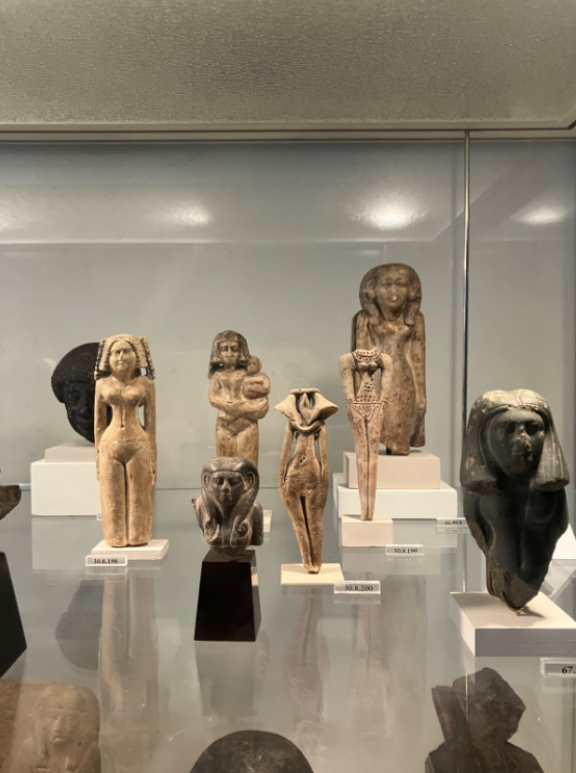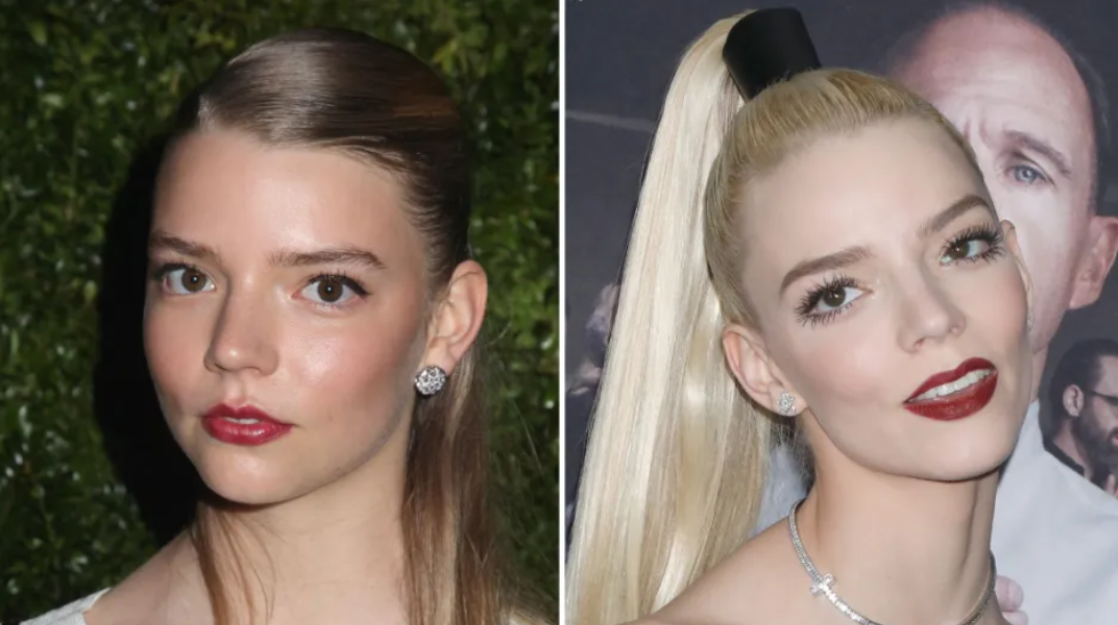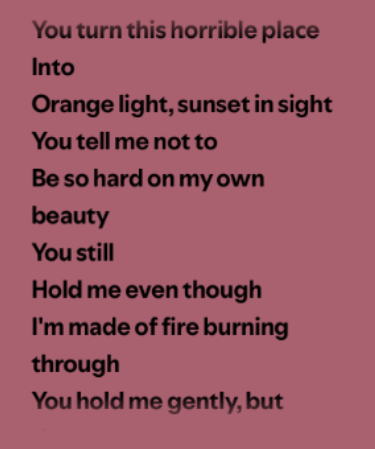Superhuman or SubHuman?
Jorden Demerritte
Early this year in March, I strolled through the MET in New York City–and as I lagged behind my Museum Studies classmates, I came across some intriguing figures made in ancient Egypt, as far back as 4300 BCE.
Taken in the Egyptian section at the Metropolitan Museum of Art. Image source: Jorden Demerritte
My classmate, Miakeya googled at them with a curious smirk–waiting to be peeled back and interpreted. Her observations matched my own: these ancient figures of women with their thin waists and wide hips reflect standards of beauty that women could not escape… even in ancient Egypt.
Before sit down to write this article, I was lounging in a self-indulgent break between classes, and as any 21st century youth does, I started surfing the web–following trains of sporadic thoughts until I came across Anya Taylor Joy.
The photos of her in 2024 filled me with confusion and concern. Her plump cheeks were deflated to a sculpted jaw, and she looked thinner and unlively, as if a syringe sucked up her youthfulness.
Confirming my suspicions was a side-by-side photograph of her–one from the days of the Queen’s Gambit and the other of her today. This reminded me, sending a glaring signal of the beauty standard traps surrounding internet-raised teens and adults. Ozempic now permeates online wellness shops and plastic surgery offices line familiar Miami streets without any sign of closing. It pains me to think people who struggle with body acceptance, would admire the features and gaunt jawlines made out of silicone injections and plastic molds.
Have we been planted square into the desert, chasing after this elusive mirage of perfection, only to find ourselves further parched and less human?
We run ourselves ragged, chasing rainbows and bending towards the horizon, distorting ourselves in pursuit of fleeting admiration until we become “too old” or out-of-style. This perpetual grab at recognition for the forever rotting husk our humanity lies within and calls home.
Artists like Yeule and Olivia Rodrigo delve into this conundrum of the beauty standard that entraps feminine presenting persons (whether from themselves, community bias, or social media).
Within the first 5 lines of “Pretty Isn’t Pretty Enough” by Olivia Rodrigo the imagery of a girl’s chase to fit in aesthetically is developed:
The lines above: “You can win the battle /But you’ll never win the war. You can fix the things you hated /And you’d still feel so insecure,” illustrates the fickleness of the perfect beauty we seek from ourselves and the fixation to alleviate the burden of these self-perceived imperfections.
One of my favorite songs, now 2 years old, by Yeule titled “Don’t Be So Hard on Your Own Beauty,” explores this idea explicitly. The song travels through an existential breakdown caused by her tarnished view of self and her perception that beyond not being enough, she creates casualties out of the people around her, due to all she lacks internally and externally.
A pivotal figure in the song reiterates the point to not be so hard on her own beauty, and attempts to expand the viewfinder of her self-perception. Rather than beauty existing solely in the confines of the exterior–it also exists within.
Screenshot of Yuele’s Spotify lyrics “Don’t Be So Hard On Your Own Beauty”
These songs are a reminder that humanity is not wholly encompassed on the outside. It notifies listeners that it is no superhuman feat to gain beauty via money, lighting, or popularity. These songs are a reminder that the everlasting beauty to strive for exists in the heart.
A couple of questions to the reader: What do you believe about yourself? How do you treat yourself? Are you happy with the life you have made for yourself?
Strike Out,
Jorden Demerritte
Editor: Carla Mendez
Jorden Demerritte is a second-year at Miami Dade College pursuing an Associate of Arts in Architecture. Her experience of writing includes being Cartoonist and Staff Writer of The Beacon, a high school newspaper. She has experience interviewing individuals across the world, including Emily Damstra, an American-Canadian coin designer, and Stephen Heard, a Canadian author and biology professor. Her interest in writing lies in connecting with people and learning about the world around her. In fleeting flits of free time, Jorden enjoys online thrifting, tending to her backyard vegetable and flower garden, and reading.




